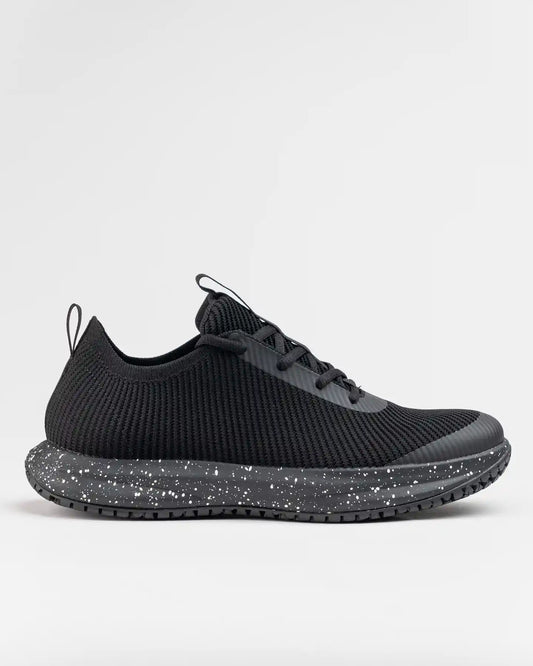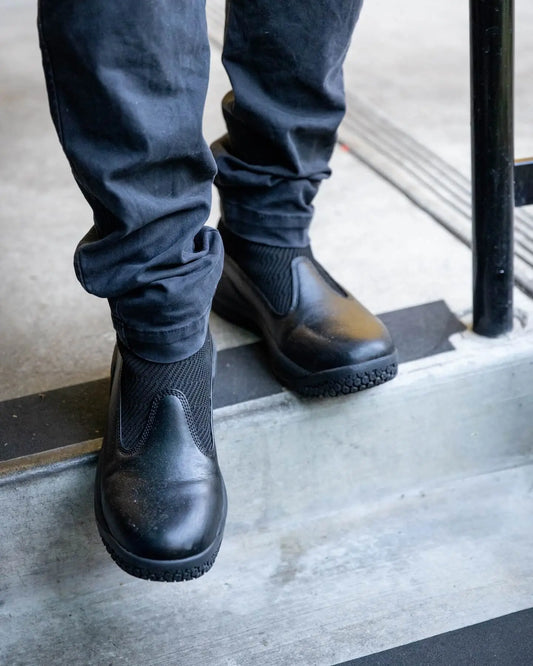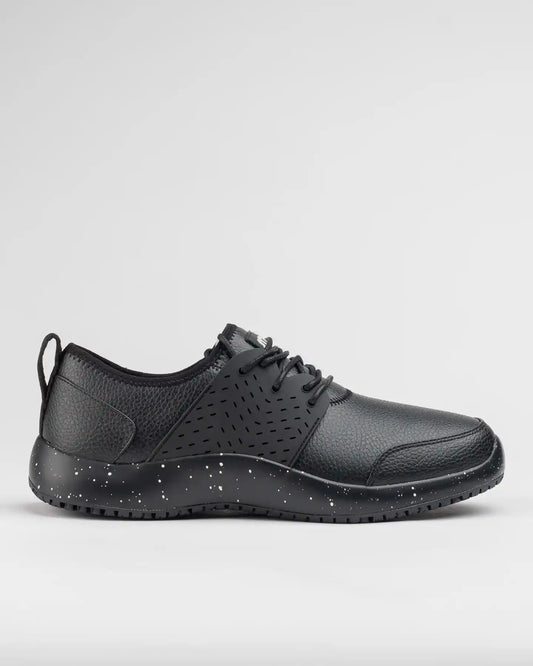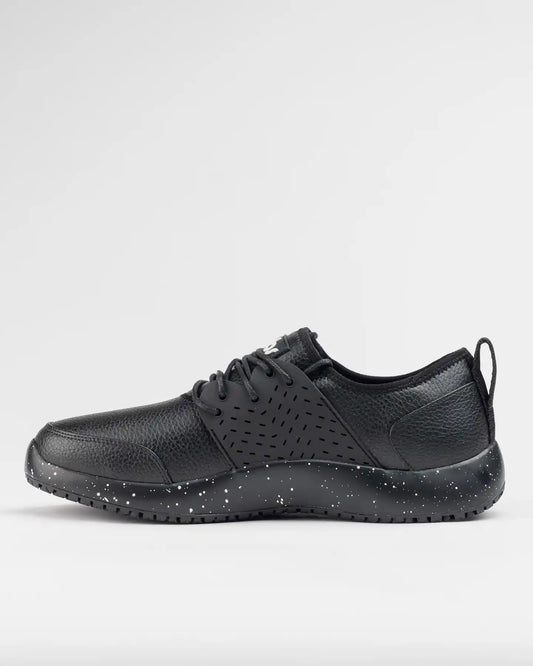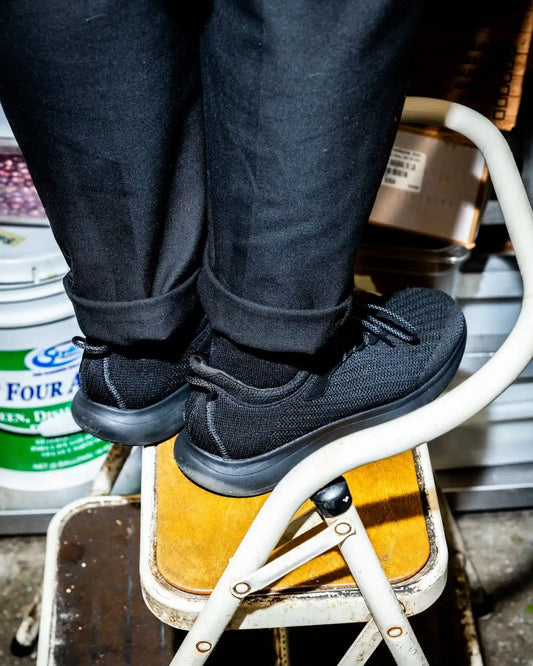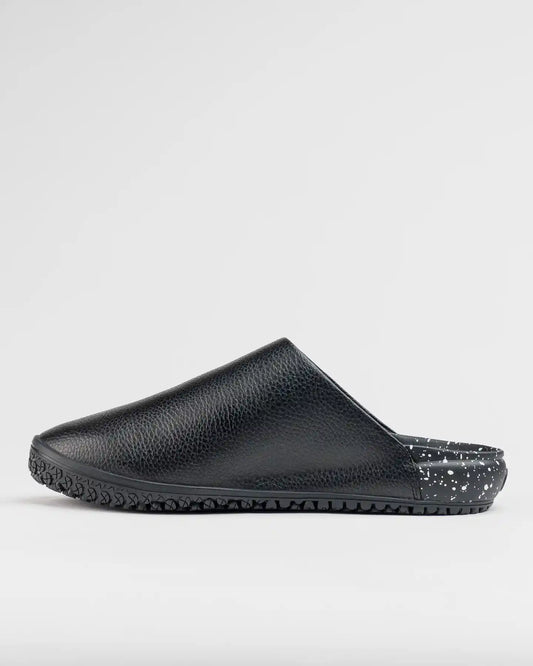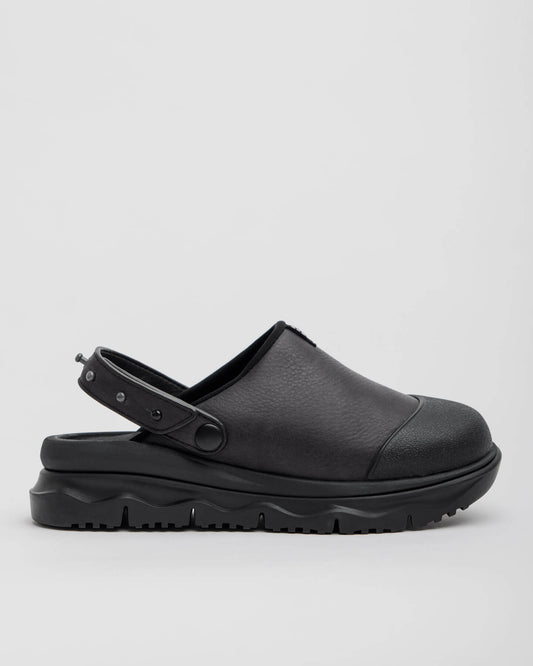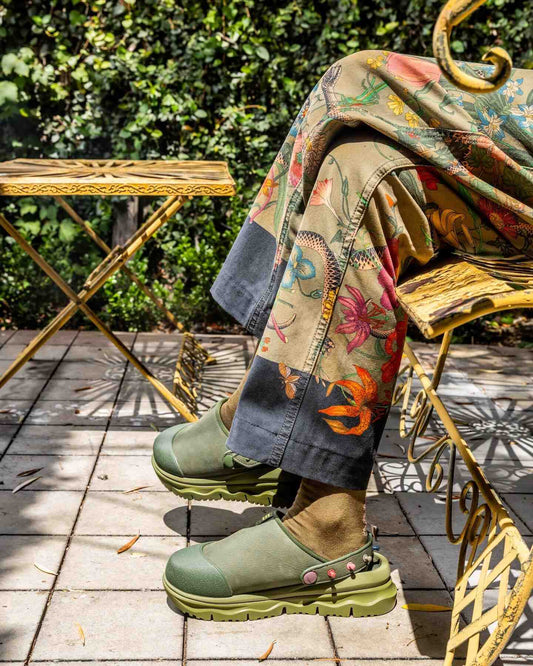Most Sustainable Materials For Shoes
Alex Kinejara
All too often, the mark of a long shift completed is sore feet. But in an ideal world, your feet should be pain-free when you unwind after work. And while we’re wishing, how about a shoe brand that offers comfort, slip-resistance, style, and a sustainable design?
This sustainable fashion order may seem tall, but it’s possible with a few key eco-friendly materials.
What are sustainable materials? There are many natural, earth-friendly materials that can marry to form an incredibly comfortable and sustainable shoe. That’s why we use recycled materials like plastic, polyurethane, and cotton as well as plant starch in our server shoes, chef shoes and the rest of the Snibbs sustainable shoes collection. By implementing these sustainable practices, we eliminate waste while elevating the footwear industry.
Let’s take a look at these 4 sustainable materials for vegan shoes and why they’re just as effective and durable as non-vegan, less sustainable alternatives.
#1 Recycled Cotton
Cotton is one of the most widely used natural materials on the planet. Yet, organic cotton production comes with high monetary and environmental costs of water, energy, and pesticides.
To rectify this, organic, recycled cotton is preferable for eco-friendly shoe production. For example, at Snibbs, we source our cotton from pre- and post-consumer fabrics that would otherwise have been added to a landfill.
More advantages of recycled cotton include:1
- Looks and feels like organic cotton – The textures of recycled and organic cotton are balanced, lightweight, and breathable.
- It’s pre-processed – Recycled cotton fabrics have already gone through costly and chemical-heavy processes such as bleaching. Therefore, dying and printing with recycled cotton becomes easier and less resource-intensive.
- It’s versatile and biodegradable – Uses of recycled cotton have vastly expanded with the ability to upcycle and re-recycle it with added materials for extra durability. Both recycled and organic cotton are also naturally biodegradable—so they won’t sit forever in a landfill.2
#2 Recycled Plastic
According to National Geographic, 91% of plastic goes unrecycled. 3Instead, it accumulates in our oceans, beaches, and cities and, unlike cotton, it does not biodegrade. So when plastic is one of the most useful materials on the planet, it seems only right that the waste assumes another life through recycling.
Moreover, using recycled plastic for shoe production significantly reduces the environmental impact of shoes compared to the production of net-new plastic. That’s why, at Snibbs, we use microfiber and polyester for our shoe uppers and liners made from 100% recycled plastic bottles—taking the enduring properties of this material off of sandy beaches and into durable shoes.
Environmental benefits of recycled polyester include:4
- Decreases dependency on fossil fuels
- Fewer carbon emissions and natural resources used for production
- Fabric waste, fishing nets, plastic bottles, and more are diverted away from landfills
#3 Plant Starch
Why are some sustainable materials made of plant starch? Plant starch employs a mixture of sturdy plant material, usually comprised of hearty produce like potatoes or corn, with fillers to create a durable building material. The high sustainability of plant starch makes it an ideal alternative to plastics, metals, and other virgin materials gained through high-impact extraction.
Not only are plant materials renewable, but their starches have proven their durability through time and tough conditions. That’s why we use plant starch materials for Snibbs lace braces: Powerful plant ingredients to power your step through your toughest work days.
More reasons we use plant starch:5
-
It’s lightweight – Every aspect of the shoe should be as light as possible, and plant materials have a surprising impact on weight reduction.
-
It’s renewable – Vegetables like corn and potatoes make for readily available materials and renewability. Sustainable shoe materials that also feed nations? Count us in.
- It’s biodegradable – Materials derived from plants leave the world as naturally as they enter it. When we build with plants, their parts can replenish the earth later.
Using these sustainable materials also helps when navigating how to recycle shoes later on.
#4 Recycled Polyurethane
Highly versatile and recyclable, polyurethane is an exceptionally sustainable plastic with a low environmental impact and simple production. Snibbs uses recycled polyurethane for the mid shoe sole of our work shoes to slice production outputs even further.
Polyurethane’s durability also makes it one of the most protective and energy-efficient plastics. Primarily used as a means of comfort, polyurethane is known for its insulating ability. It makes an excellent sealant, coating, adhesive, or high-gloss finish, often used in car seats, kitchen appliances, and computers.6
Some benefits of polyurethane are:7
- Its insulating properties save energy by retaining heat
- Recycled polyurethane is nearly identical to its original form
- It saves up to 130 times more carbon dioxide emissions than its production generates
Snibbs: The Leaders in Sustainable Footwear
Your feet shouldn’t bare the brunt of a trying shift at work—and neither should the planet. To take care of both, invest in a quality pair of shoes designed with sustainable materials that aid in comfort and consciousness.
Reduce your carbon footprint and invest in the future of sneakers. Invest in Snibbs.
At Snibbs, we wanted to reimagine the footwear industry and transform what work shoes could look and feel like. Who says we can’t have sustainable footwear that minds the planet and keeps feet pain-free for an entire 12-hour shift? Snibbs slip-resistant work shoes are sustainable, biodegradable, and built to last—until you choose to decompose them sustainably, of course.
Shop our collection of work shoes and sustainable sneakers today.
Sources:
- Cottonworks. Recycled Cotton. https://www.cottonworks.com/en/topics/sustainability/cotton-sustainability/recycled-cotton/#benefits-challenges
- Sustainable Fashion. Recycled Cotton is Still an Emerging Fabric. https://sustainfashion.info/recycled-cotton-is-still-an-emerging-fabric/
- National Geographic. A whopping 91% of plastic isn’t recycled. https://www.nationalgeographic.com/science/article/plastic-produced-recycling-waste-ocean-trash-debris-environment
- The Honest Consumer. What is Recycled Polyester? The Best RPET Clothing Brands. https://www.thehonestconsumer.com/blog/clothing-made-from-recycled-plastic
- Eco World. What is Corn Starch Plastic? https://ecoworldonline.com/what-is-corn-starch-plastic/
- American Chemistry Council. Polyurethane. https://www.americanchemistry.com/chemistry-in-america/chemistries/polyurethane
- Synthesia Technology. How is Polyurethane Recycled? https://blog.synthesia.com/en/how-is-polyurethane-recycled

